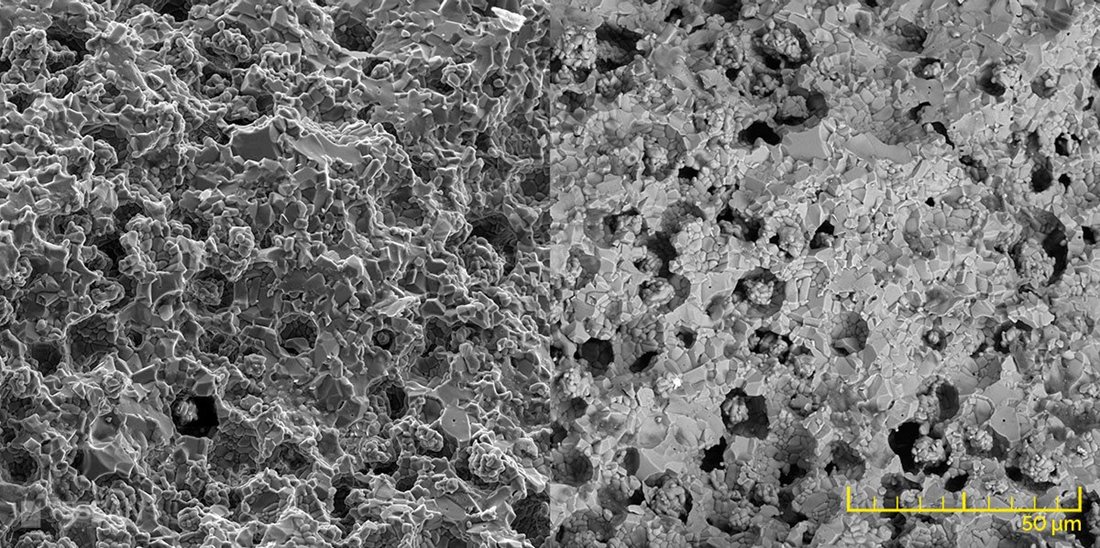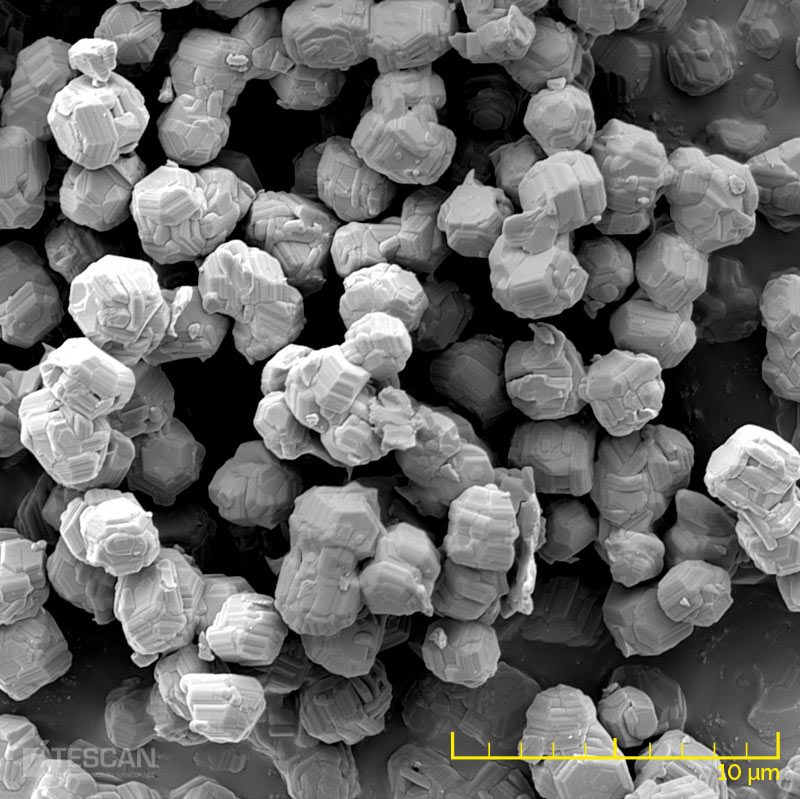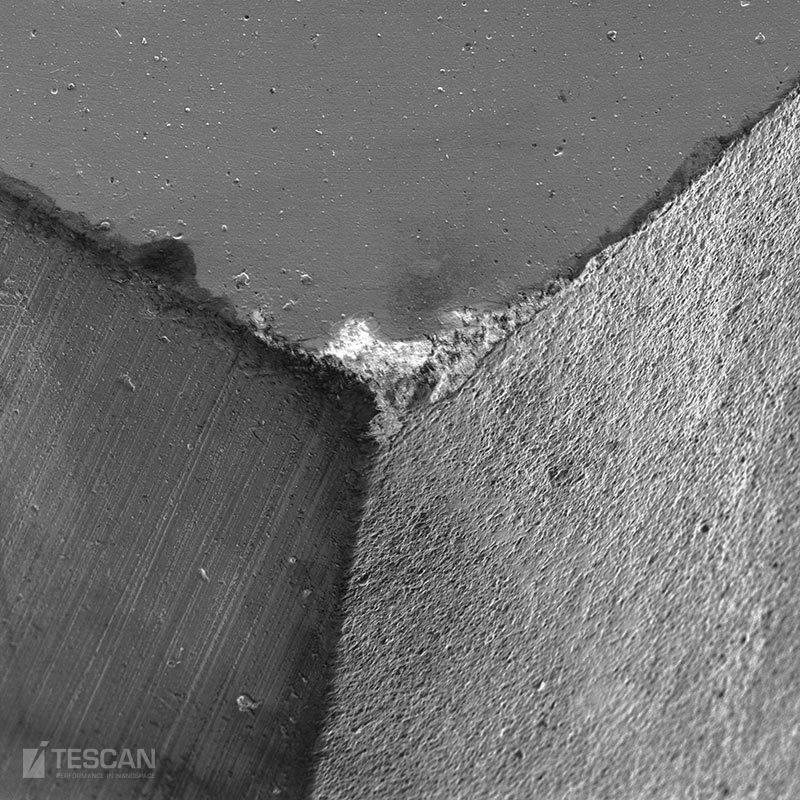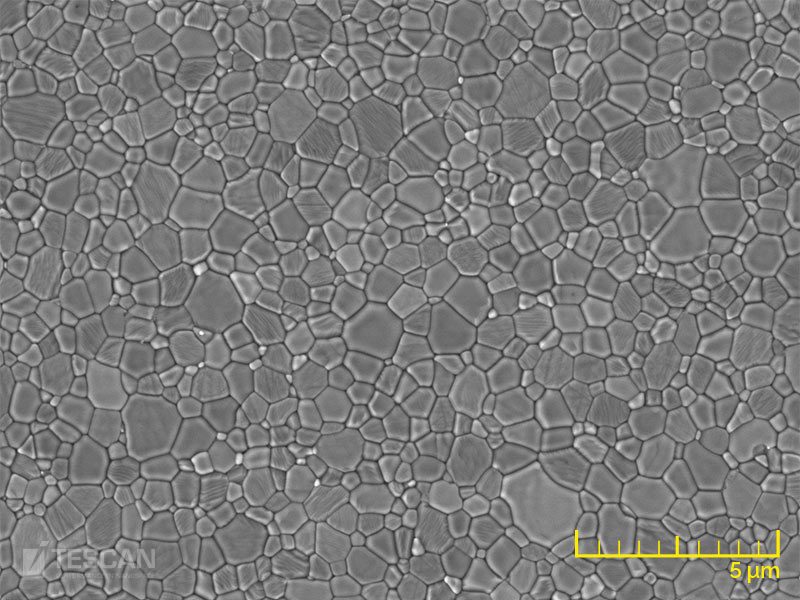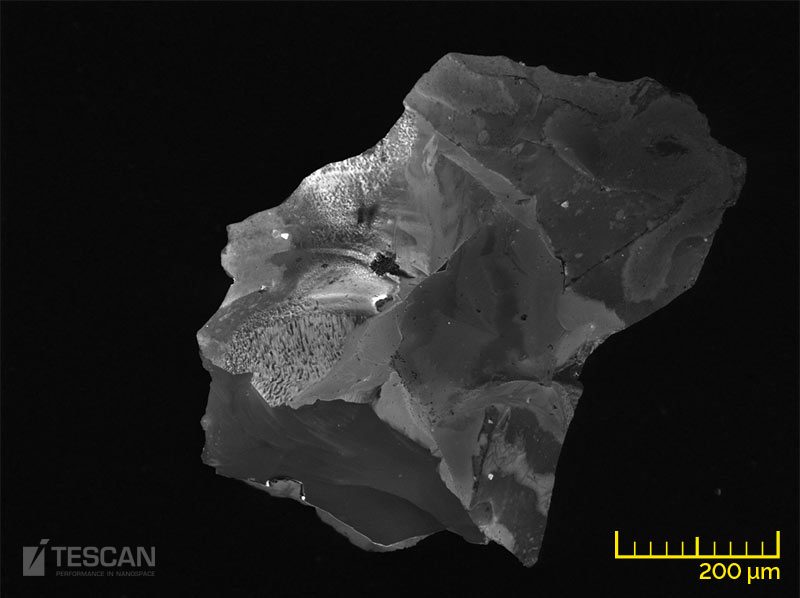Technical ceramics can be divided into the following groups: oxide ceramics (which contain materials consisting primary of metal oxides such as alumina, zirconia, beryllium and ceria); non-oxide ceramics (materials based on carbides, nitrides, borides and silicates); and composite ceramics (comprising particle- and fibre-reinforced ceramics as well as combinations of oxides and non-oxide ceramics).
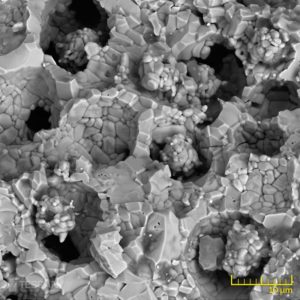
Al2O3– detail (BSE detector)
- Advanced ceramics refers to technical, engineering or industrial ceramics.
- Ceramic materials are very resistant to abrasion and have very interesting mechanical, electrical, thermal properties.
- Advanced ceramics have a wide range of applications in automotive, medicine, electrical and electronic industry.
- TESCAN Field Emission Gun SEMs (FEG-SEMs) are ideal instruments for studying advanced ceramic structures at high resolution.
- SEM can be used in combination with the Beam Deceleration Technology (BDT) in order to achieve high-resolution imaging at ultra-low landing electron energies, allowing researchers to obtain superb images of the microstructure of such samples.
- Micro-CT allows researchers to non-destructively visualize internal features such as porosity, cracks, and phase distributions.
- Al2O3 – overview (SE, BSE detector)
- SiC
- Cutting tool – edge coatings
- Zirconia
- Corund inclusion – Al2O3 + silicates


